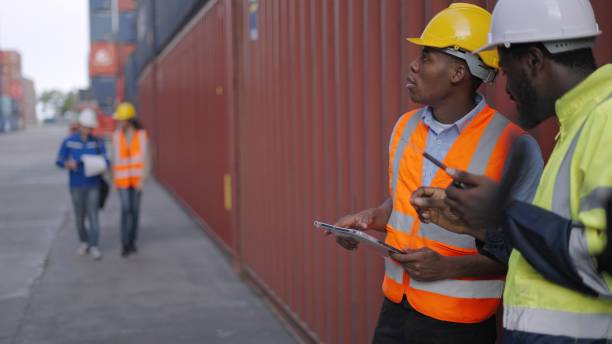Environmental concerns, changing customer expectations, and technological improvements are all having a profound impact on the local transport industry. As we approach the start of a new decade, companies engaged in regional transportation need to look ahead and seize the opportunities presented by new developments that will influence local haulage in the years to come. The major themes that are anticipated to reshape the sector over the next ten years are examined in this article, offering stakeholders guidance on how to maintain an advantage in a market that is becoming more competitive and dynamic.
1. Electrification of Local Haulage Fleets
Local transport fleet electrification is one of the most prominent and obvious trends that lie ahead. Businesses are rapidly investing in electric vehicles (EVs) for their short-distance transportation needs as a result of the growing emphasis on sustainability and the reduction of carbon emissions. The range of electric vehicles is increasing thanks to advancements in battery technology, making them a practical and environmentally responsible choice for local haulage. Anticipate a sharp increase in the use of electric vehicles as companies work to comply with regulations and environmental targets.
2. Autonomous and Semi-Autonomous Vehicles
The use of automation in local haulage is expected to undergo a paradigm shift throughout the next ten years. Semi-autonomous truck technologies are now entering the market, even though completely autonomous vehicles might still remain in the testing stage. The efficiency and safety of local transport operations are being improved by features including autonomous braking systems, adaptive cruise control, and lane-keeping assistance. The use of completely autonomous local haulage vehicles is probably going to increase as legislation and technology advance.
3. Last-Mile Delivery Innovations
The last mile—the portion of the supply chain that transports products to the ultimate customer—remains a key area of innovation in local haulage. Businesses are experimenting with novel strategies for last-mile logistics in response to the growth of e-commerce and customer expectations for quicker and more convenient deliveries. It is anticipated that autonomous delivery vehicles, robots, and drones will become more commonplace in last-mile delivery, cutting expenses and delivery times while increasing overall effectiveness.
4. Advanced Telematics and Tracking Systems
The next decade will witness a surge in the adoption of advanced telematics and tracking systems to optimize local haulage operations. Real-time tracking, route optimization, and predictive maintenance capabilities will become standard features in local haulage fleets. These technologies not only improve operational efficiency but also provide valuable data for analytics, enabling businesses to make informed decisions about route planning, fuel efficiency, and vehicle maintenance.
5. Green Logistics Initiatives
Environmental sustainability is no longer just a buzzword; it is a driving force behind emerging trends in local haulage. Businesses are increasingly implementing green logistics initiatives to minimize their carbon footprint. This includes not only the adoption of electric vehicles but also the use of alternative fuels, optimization of routes for fuel efficiency, and the incorporation of sustainable packaging practices. Expect to see a growing emphasis on eco-friendly solutions as businesses prioritize their environmental responsibilities.
6. Integration of Artificial Intelligence (AI) and Machine Learning (ML)
The next decade will witness a deeper integration of artificial intelligence (AI) and machine learning (ML) into local haulage operations. These technologies will play a pivotal role in predictive analytics, demand forecasting, and route optimization. AI-powered systems can analyze vast amounts of data to identify patterns, enabling businesses to make data-driven decisions that enhance efficiency and reduce costs. As these technologies evolve, their applications in local haulage will become increasingly sophisticated.
7. Modular and Flexible Logistics Solutions
Flexibility is becoming a hallmark of successful local haulage operations. In the coming decade, businesses will prioritize modular and flexible logistics solutions that can adapt to changing market dynamics and customer demands. This may involve the use of modular vehicle designs, flexible scheduling systems, and agile supply chain management practices. The ability to pivot and respond rapidly to fluctuations in demand will be a key differentiator for successful local haulage providers.
8. Enhanced Connectivity and Communication
In the next decade, we will witness a revolution in connectivity and communication within local haulage networks. The Internet of Things (IoT) will play a pivotal role in creating a connected ecosystem where vehicles, warehouses, and distribution centers communicate seamlessly. This connectivity will enable real-time data sharing, improving coordination, reducing delays, and enhancing overall visibility across the supply chain. Expect to see the emergence of smart logistics solutions that leverage enhanced connectivity for optimal efficiency.
9. Cybersecurity in Local Haulage
As local haulage operations become more reliant on digital technologies and interconnected systems, the importance of cybersecurity cannot be overstated. The next decade will see an increased focus on safeguarding local haulage networks from cyber threats. Businesses will invest in robust cybersecurity measures to protect sensitive data, ensure the integrity of communication systems, and safeguard against potential disruptions. The protection of digital assets will be paramount as the industry becomes more digitally interconnected.
10. Collaborative Logistics Networks
Collaboration is a recurring theme in the future of local haulage. The next decade will witness the rise of collaborative logistics networks where businesses, suppliers, and even competitors work together to optimize transportation processes. Shared resources, collaborative delivery routes, and cooperative efforts to address common challenges will become integral to the success of local haulage operations. This collaborative approach not only enhances efficiency but also contributes to sustainable practices and cost savings.
Conclusion
The next decade promises to bring about transformative changes in the local haulage industry. Stakeholders who anticipate and embrace these emerging trends will be well-positioned to navigate the evolving landscape successfully. From electrification and automation to advanced technologies and sustainable practices, the future of local haulage is characterized by innovation, efficiency, and a commitment to meeting the demands of a rapidly changing world. As businesses prepare for the challenges and opportunities that lie ahead, the ability to adapt to these emerging trends will be a key determinant of success in the local haulage industry of the next decade.
